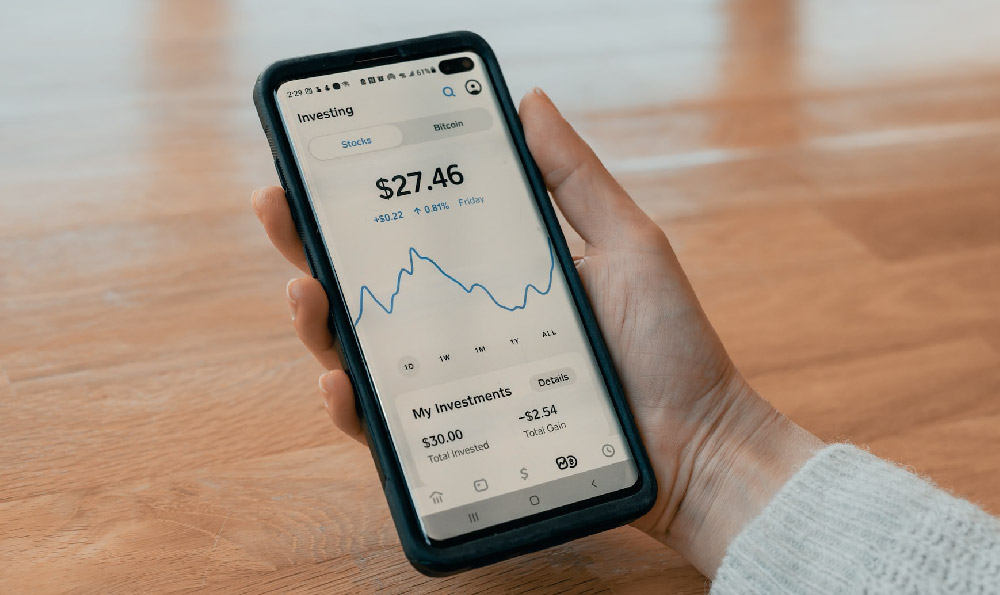Investing in the Philippine stock market can seem daunting, especially for beginners. However, with the right knowledge and a strategic approach, you can navigate the local bourse and potentially grow your wealth. This guide provides a step-by-step walkthrough, from understanding the basics to selecting your first stocks, all while keeping in mind the nuances of the Philippine market.
Understanding the Philippine Stock Market (PSE)
Before diving in, it's crucial to grasp the fundamentals of the Philippine Stock Exchange (PSE). The PSE is the only stock exchange in the Philippines, facilitating the buying and selling of shares of publicly listed companies. It operates under the supervision of the Securities and Exchange Commission (SEC), ensuring fair and transparent trading practices.

The PSE Composite Index (PSEi) is the benchmark index, representing the performance of the top 30 largest and most actively traded companies in the country. Tracking the PSEi provides a general overview of the market's health. However, remember that the PSEi is not a comprehensive reflection of the entire market, and focusing solely on it can be misleading.
Opening a Brokerage Account: Your Gateway to the PSE
The first step is to open a brokerage account. Several reputable online brokers operate in the Philippines, offering convenient access to the PSE. Popular options include COL Financial, First Metro Securities, BDO Securities, and AB Capital Securities. Consider factors like commission fees, platform usability, research tools, and customer support when selecting a broker.
The application process typically involves submitting identification documents (such as passport or driver's license), proof of address, and filling out an application form. Some brokers may also require a minimum initial deposit. Once your account is approved, you can fund it through various methods, including bank transfers, online payments, and checks.
Learning the Lingo: Essential Stock Market Terminology
Familiarize yourself with essential stock market terminology. Understanding terms like "bull market" (rising prices), "bear market" (falling prices), "dividend" (a portion of company profits distributed to shareholders), "earnings per share (EPS)" (a company's profit allocated to each outstanding share of common stock), "price-to-earnings ratio (P/E ratio)" (a valuation ratio comparing a company's share price to its earnings per share), and "market capitalization" (the total value of a company's outstanding shares) is crucial for informed decision-making.
Developing a Sound Investment Strategy: Risk Tolerance and Investment Goals
Before investing, define your investment goals and risk tolerance. Are you investing for short-term gains or long-term growth? How much risk are you willing to take? Your investment strategy should align with your financial goals and risk appetite.
Consider diversifying your portfolio across different sectors and asset classes to mitigate risk. Don't put all your eggs in one basket. Spreading your investments across various stocks, bonds, and even real estate investment trusts (REITs) can help cushion your portfolio against market volatility.
Fundamental Analysis: Unveiling Company Value
Fundamental analysis involves evaluating a company's financial health and potential for future growth. This includes analyzing its financial statements (income statement, balance sheet, and cash flow statement), understanding its business model, and assessing its competitive landscape.
Key metrics to consider include revenue growth, profitability (net income margin, return on equity), debt levels, and cash flow. Also, stay updated on industry trends and regulatory changes that may impact the company's performance.
Technical Analysis: Charting the Market's Course
Technical analysis involves studying historical price and volume data to identify patterns and predict future price movements. Technical analysts use charts and indicators to identify potential entry and exit points for trades.
While technical analysis can be helpful for short-term trading, it's generally less reliable for long-term investing. Combine fundamental analysis with technical analysis for a more comprehensive approach.
What Stocks to Consider in the Philippine Market (Illustrative Examples)
Choosing the right stocks requires careful research and analysis. Here are some examples of stocks from different sectors that beginners might consider (Note: This is not financial advice; conduct your own research before investing):
- BDO Unibank (BDO): A leading universal bank in the Philippines. The banking sector is a cornerstone of the Philippine economy.
- SM Investments Corporation (SM): A conglomerate with interests in retail, property, and banking. Diversified across key sectors of the Philippine economy.
- Ayala Land (ALI): A leading property developer in the Philippines. Benefit from the growing urbanization and real estate demand.
- Globe Telecom (GLO): One of the major telecommunications providers in the Philippines. The telecom sector is a stable and essential industry.
- ACEN Corporation (ACEN): A renewable energy company. Riding the wave of increasing demand for clean energy solutions.
Remember to research these companies thoroughly before investing. Look at their financial statements, growth prospects, and competitive advantages.
Starting Small: Dollar-Cost Averaging
For beginners, consider using a dollar-cost averaging strategy. This involves investing a fixed amount of money at regular intervals, regardless of the stock price. This can help you mitigate the risk of buying high and averaging down your cost basis over time.
Staying Informed: Continuous Learning and Monitoring
The stock market is constantly evolving. Stay informed about market trends, company news, and economic developments. Regularly monitor your portfolio's performance and make adjustments as needed. Consider subscribing to financial news sources, attending investment seminars, and reading books on investing.
Seek Professional Advice (If Needed)
If you're feeling overwhelmed or unsure about your investment decisions, consider seeking advice from a qualified financial advisor. A financial advisor can help you develop a personalized investment plan based on your individual needs and goals. They can also provide guidance on risk management and portfolio diversification.
Risks and Precautions: Market Volatility and Due Diligence
Investing in the stock market involves risks. Market volatility can lead to fluctuations in stock prices, and you could potentially lose money. Therefore, it's crucial to invest only what you can afford to lose. Always conduct thorough due diligence before investing in any stock. Don't rely solely on rumors or speculation. Be wary of get-rich-quick schemes and unrealistic promises.
Investing in the Philippine stock market can be a rewarding experience if approached with knowledge, discipline, and a long-term perspective. Remember to start small, stay informed, and adapt your strategy as needed. Good luck with your investment journey!












